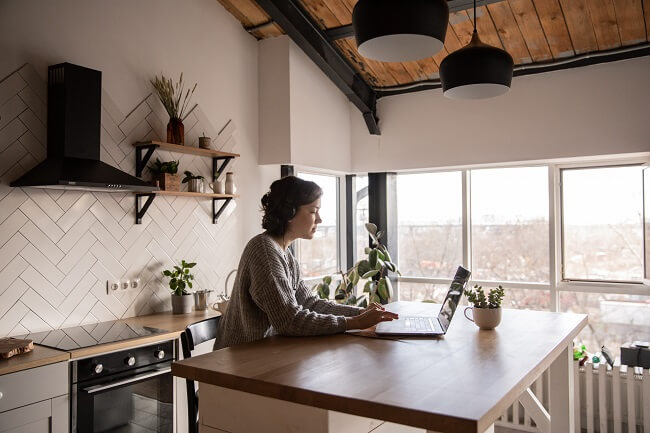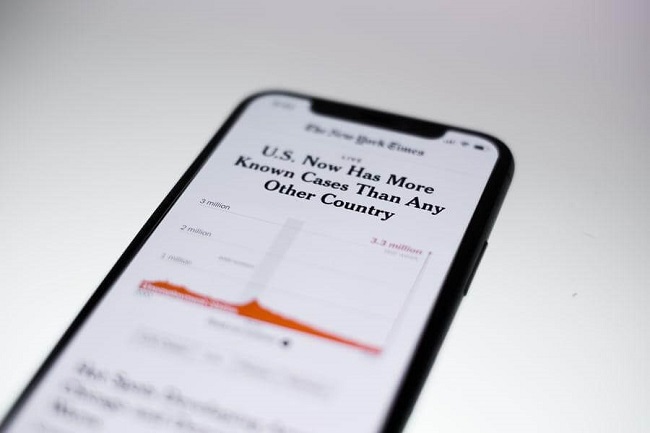On May 21st, 2020, the CEO of Shopify Tobi Lutke tweeted, “As of today, Shopify is a digital by default company. We will keep our offices closed until 2021 so that we can rework them for this new reality. And after that, most will permanently work remotely. Office centricity is over,” with the pandemic sculpting the future of work as we know it. Spotify, one of the first to start the complete switch to at-home working, is certainly not the only one with Google, Microsoft, Capital One, and Zillow all extending their remote working options. With no clear sign of when the pandemic will fully dissipate, industries across the world are beginning to pick up new trends to thrive in the post-COVID-19 workplace.
Handling Work During Covid-19
In the U.S. alone, 2.9 million people had to be let go because of Coronavirus hardships, 2.6 million of which had jobs that were unable to convert to digital or operate remotely.
While the pandemic has left many people jobless, other businesses have managed to have staff work from home by readjusting their strategies and implementing new work routines and guidelines for employees to follow. It has come with its hardships, especially for managers who have had difficulty leading their staff and checking up on each employee’s workflow; a total of 75% worried about home/life distractions employees may have that they won’t be able to handle virtually.
As the virus continues to spread and even past its peak, industries will need to begin thinking of future work trends and how they will handle their own staff and employees. Despite the many obstacles the pandemic has brought upon society, getting ahead of future work trends will help all in the long-run.
What Will The Future of Work Trends post-COVID Be?
For DTC brands during the pandemic, trends have been adopted based on the increased need by consumers as well as companies working hard to maintain and continue their growth trajectory. For industries in general, specific work trends are still in the early stages of development and some trends have yet to be predicted.
The below list includes possible strategies and setups that companies will likely see in the future of work trends post-COVID:
Time Flexibility: Over 56% of parents working from home have reported that they are finding difficulties balancing work, family time and chores. In response to this, many businesses are being empathetic towards families all stuck at home as time flexibility has become a common new factor in work schedules and routines. Some employees have found it easier to work on off-hours, either early or later in the day when their children are less likely to interrupt, for a quiet, not disruptive work period that employers are giving the go-ahead on.
Online Collaboration Tools: The future of work predicted to have employees working from home more often as online collaboration tools are being adopted by a huge amount of companies. As a means for coworkers to stay in touch and be able to simultaneously work on projects together despite working remotely. Reported by 30% of IT executives, the use of collaborative tools such as Trello, Slack, and Google Docs will be a key factor in employee work models going forward.
Redesigning Workspaces: Even if workers will be going into the office less, buildings will have major redesigns for hygienic and amenity reasons. As time goes on, cleanliness and safety will remain a priority in workspaces with different seating and desk arrangements yet still open enough to create a collaborative environment. The luxury that many employees have at home being access to food, comfortable spaces, and personalized setups mean these amenities are predicted to be incorporated into offices, as well. Businesses will start to offer cafeés, lounges, game rooms, and libraries to employees in hopes of creating the same level of comfort workers feel while working from home.

Expanded Data Collection: A way of tracking employees and their workflow from home will possibly be for employers to use data-collecting systems. It’s a strategy for leaders to stay on top of their staff and make sure despite working remotely, everyone, in fact, is finishing their tasks for the day. Options such as virtually clocking in and out of the office, monitoring employee’s email activity and internal communications can and are passively being used by 16% of business owners.
As time goes on, businesses and different industries will need to start implementing new work strategies and systems that’ll overall create a better work environment whether at home or in the office for staff. Whether it’s reconfiguring your office space with more amenities to keep employees feeling comfortable or utilizing data-collecting programs to keep track of everyone’s workflow, the sooner these tasks are worked on the more likely the company will thrive in the post-COVID-19 workplace.
Conclusion
Overall, businesses following these trends will likely lead to a healthier work environment for employees whether working in the office or at home despite being a drastic change to the world pre-COVID. Industries will need to learn and adapt to these new ways but have the comfort of knowing that these trends will help the workplace strive far after the pandemic is over.





Tell us your thoughts in the comments